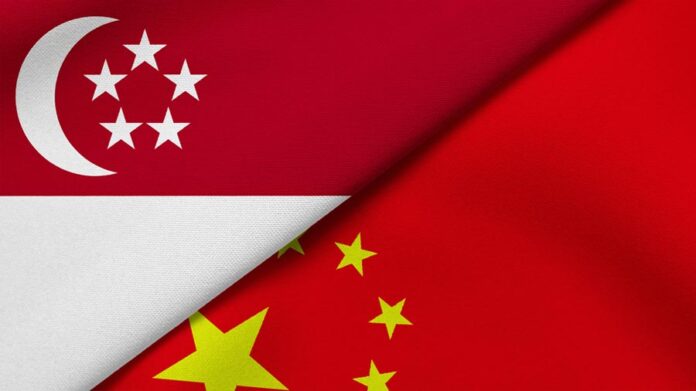Singapore and China’s evolving trade relationship, marked by enduring cooperation and emerging challenges, is strengthened by the February 2024 Singapore-China Economic Partnership Conference, where three MOUs were signed to enhance business relationships and intellectual property protection. This relationship, established in 1990, continues to influence the broader geopolitical landscape in Asia.
The Evolving Relationship
The trade and investment dynamics between Singapore and China are evolving, reflecting both enduring cooperation and new challenges due to increased industrial competition. This partnership shapes not only their bilateral relations but also the broader geopolitical landscape in Asia. Singapore’s strategic location and China’s growing influence are pivotal in Southeast Asia’s trade dynamics, underlining the importance of staying current with economic trends for future collaboration.
Historical Partners
Since 1990, Singapore and China have developed a robust partnership based on mutual respect and cooperation. This alliance spans various sectors, including trade, investment, and cultural exchange, and has been strengthened through numerous agreements and initiatives promoting regional stability and economic growth. Their efforts continue to solidify their status as key historical partners in the region.
In the dynamic global economy, Singapore and China have forged a robust bilateral relationship, particularly in trade and investment. This partnership has been mutually beneficial, contributing significantly to the economic growth of both nations.
Singapore, a small but economically powerful city-state, serves as a strategic gateway for Chinese companies seeking to expand their footprint in Southeast Asia and beyond. Its well-established legal system, business-friendly environment, and advanced infrastructure make it an attractive destination for Chinese investments. Conversely, China’s vast market and rapid economic growth present lucrative opportunities for Singaporean businesses.
The trade relationship between the two countries is underpinned by the China-Singapore Free Trade Agreement (CSFTA), the first comprehensive bilateral FTA China signed with an ASEAN country. Since its implementation in 2009, the CSFTA has facilitated increased trade, with Singapore becoming China’s largest foreign investor in 2020.
China is Singapore’s largest trading partner, with bilateral trade reaching SGD 143 billion in 2020. Key exports from Singapore to China include electronics, chemicals, and petroleum products, while Singapore imports machinery, electronics, and mineral fuels from China.
In terms of investment, Singapore is one of the top sources of foreign direct investment (FDI) into China, particularly in sectors like real estate, manufacturing, and finance. Meanwhile, Chinese FDI into Singapore has grown significantly, focusing on areas such as information and communications technology, finance, and professional services.
The Belt and Road Initiative (BRI) has further strengthened Singapore-China bilateral relations. Singapore, with its strategic location and maritime capabilities, is well-positioned to contribute to the BRI’s success. The two countries have jointly developed the Chongqing Connectivity Initiative, a project aimed at enhancing connectivity between Western China and Southeast Asia.
Moving forward, the Singapore-China bilateral relationship is expected to continue flourishing. The recently upgraded CSFTA, the ongoing BRI, and the Regional Comprehensive Economic Partnership (RCEP) are set to provide new opportunities for trade and investment between the two nations. However, challenges such as geopolitical tensions and economic uncertainties need to be navigated carefully to ensure the continued growth and success of this strategic partnership.
Source : Singapore-China Bilateral Relations: Trade and Investment Outlook


